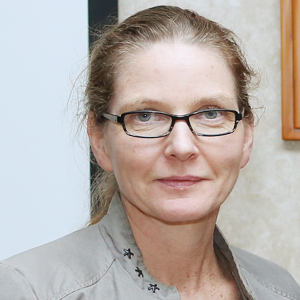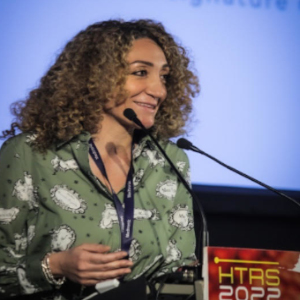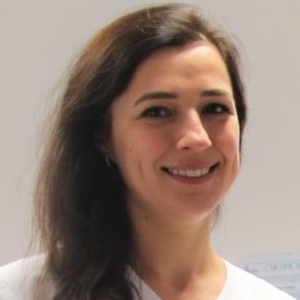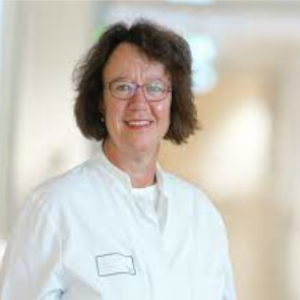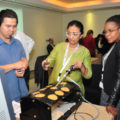
Minimally Invasive Surgery
We perform minimally invasive procedures whenever possible to minimize pain and surgical risk while optimizing the outcome of the procedure.
Devassy’s team are GESEA certified or Specialised German Diploma trained personnel.
A few of the wide spectrum of Dr. Dr. med. Devassy’s expertise in major gynaecological and oncological surgeries are:
Natural orifice and Hysteroscopic surgeries:
- Hysteroscopy to Remove Polyps and Fibroids
- Hysteroscopy to correct congenital defects of the uterus
- Hysteroscopy to remove adhesions from previous surgeries and especially curettage
- Hysteroscopic treatment of caesarean scar niche defect
- Hysteroscopy for improving fertility outcome
- Vaginal Hysterectomy
- V- NOTES (Vaginal – Natural orifice Telescopic Surgery)
- Vaginal prolapse surgery
- Vaginal plastic reconstructive procedures
- Conservative treatment in cancer cervix
Laparoscopic and minimal-access surgeries
- Laparoscopic creation of neo-vagina
- SILS- Single incision Laparoscopic Surgery
- Laparoscopic Myomectomy (removal of fibroids)
- *we use morcellation only within a containment system since 2014 and when it is safe to do.
- Other methods of extraction by minimal-access is employed otherwise.
- Laparoscopic Hysterectomy (removal of uterus)
- Laparoscopic endometriosis and adenomyosis surgery
- Laparoscopic adhesiolysis surgery
- We promote adhesion prophylaxis in every surgery possible for patient safety
- Laparoscopic Prolapse surgery
- Laparoscopic surgery for urinary incontinence
- Laparoscopic mesh-free (meshless) pelvic organ prolapse surgery
- Laparoscopic Surgery for gynaecological cancers
- Laparoscopic Removal of Fallopian tubal disease, Ovarian Cyst and ectopic pregnancy.
- Laparoscopic Ovarian rejuvenation – Stem cell transfer
- Laparoscopic treatment of Niche- isthmocele of Caesarean scar
- Minimal-invasive Uterus-preserving surgery in benign and malignant diseases
- Fertility-enhancing minimal-invasive surgery
- NOTES – Natural orifice Telescopic Surgery
- Robotic assisted Laparoscopic Surgery
FIBROID REMOVAL
Over 80% of women between 30 and 50 years of age have uterine fibroids. Depending on their size and location, fibroids can be completely asymptomatic or can cause pelvic pain, dyspareunia, pressure, urinary problems, and recurrent menorrhagia. There are several new operative techniques that don’t require major surgery.
Laparoscopic and Hysteroscopic Myomectomy is the gold standard for the treatment with our world record of 4.7 Kilos, we are pioneers in this field especially with world largest series of contained extraction techniques approved currently by FDA.
High frequency ultrasound or MRI guided myoma coagulation, Radiofrequency ablation of Myoma and Uterine artery embolization are another alternatives to myomectomy. This procedure can be combined with endometrial ablation for a discreet set of patients who have persistent uterine bleeding. Laparoscopic myomectomy is another alternative to hysterectomy.
PELVIC ORGAN PROLPASE & URINARY INCONTINENCE
Common reasons for performing prolapse surgery are prolapse causing involuntary loss of urine at any activity that involves stress or social embarrassment, discomfort or pain, difficulty emptying your bladder or bowel, prolapse not reduced by pessaries, prolapse interfering with sexual activity. A small incision is made in your belly button. The abdomen is filled with absorbable gas and an optical instrument, called a laparoscope (similar to a telescope) is inserted to visualize the internal organs. Three further small holes will be made on your abdomen. The front and back of the vagina are freed from the bladder and bowel. The vagina and/or uterus is suspended using fabric reinforcement mesh or native tissue repair with sutures in the pelvis. The procedure itself takes approximately one to two hours depending on the compartments that require repair and severity of the condition.
ENDOMETRIOSIS
Neural and deep endometriosis may be your hidden reason for undiagnosed chronic pelvic pain. Severe pelvic pain and menstrual cramps in the lower middle of the abdomen can be difficult to treat. One of the most common causes for severe menstrual (and premenstrual) cramping is endometriosis. On occasion, endometriosis can develop in the muscular wall of the uterus — this is called adenomyosis or in the pelvic wall or viscera and nerves as deep endometriosis. Laparoscopic endometriosis surgery is an advanced laparoscopic procedure only performed by a few physicians and usually results in a 90% relief of pain. Our comprehensive team of Advanced minimal-invasive surgeon, Colorectal surgeon, Urologist, Physiotherapy and Diet experts focus on sustainable care.
SUBTOTAL HYSTERECTOMY
It is a “keyhole” operation to remove the body of the womb. It is called subtotal because the cervix is not removed. It is used to treat painful and/or heavy periods. Women recover much more quickly from a laparoscopic subtotal hysterectomy (LASH) than a traditional hysterectomy. Lifestyle comfort is enhanced in LASH patient’s compared to conventional hysterectomy with early return to normal sexual activity, unchanged vaginal support and return to normal life, of course without the symptoms. It is possible to preserve the ovaries in Hysterectomy in some individuals deserving hormonal support
RADICAL HYSTERECTOMY
In Gynecological cancers, Minimal-access surgery has proven safety in the hands of an expert due to the precise nature of surgery either by conventional Laparoscopic and Robotic assisted surgeries. Procedures such as Laparoscopic radical hysterectomy and lymphadenectomy can minimize the negative impact of an extensive surgery by means of minimal-access techniques with similar results. It helps in faster recovery, and wherein adjuvant therapy is required sooner. Invariably so, minimal-access surgery could be applied in advanced cases where palliative surgery plays a major role. The most crucial part of cancer is early detection, fast treatment and recovery to regain health and immunity to fight cancer!
OVARIAN CYST REMOVAL
Laparoscopic Ovarian Cyst Removal Ovarian cyst removal is surgery to remove a cyst or cysts from one or both of your ovaries. A laparoscopic surgery uses small incisions and specialized tools. It may offer faster recovery times than open surgery. Ovarian cysts are usually removed to avoid complications such as infertility, bleeding, blood clots, and damage to other organs. A small incision will be made just below the navel. Next, a laparoscope will be inserted. This is a thin tube with a camera on the end. To allow the doctor to better view the organs, carbon dioxide gas will be pumped into the abdomen. The cyst is located and removed, and some tissue might be removed for testing.


